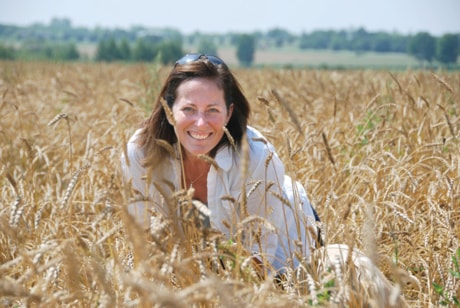As Canadian agriculture moved from many communities of family farms scattered around the country to a multi-billion-dollar industry conducted by large commercial enterprises, a lot of country staples have gone by the wayside.
With more people eating chicken than ever before, there are fewer varieties of chicken than ever before, for them to choose from.
Among grains, gene-modified varieties, owned and patented by multinational firms are the choice of modern farmers, who can combine them with specially-designed fertilizer and herbicide mixtures, for maximum yields.
In the race toward yield and profit, taste texture — and some say even nutritional value — have been pushed backward.
But here’s a story of an old cultivar that’s making a comeback, without a patent that a seed company can profit on.
Heritage Red Fife wheat is becoming the flour of choice for many Canadian artisan bakers. And for good reason.
The wheat is known as a landrace, which means there is a genetic variability in it that allows it to adapt to diverse growing conditions. It can be hard or soft, white or red and be planted in winter or spring.
Most of all, it is famous for being a fine milling and baking wheat.
Yet it had fallen out of favour among commercial farmers as newer varieties came on the market and only in recent years has it come to the fore again, especially through the actions of heritage and slow food activists.
Red Fife is characterized by three little awns (bristles) at the top of the head of wheat but otherwise is awnless.
Like most heritage wheat Red Fife may lodge, or fall over, in fields where the nitrogen content in the soil is too rich. You could call it a low-input variety.
By the 1860s Red Fife was distributed and growing across Canada, adapting to a broad diversity of growing conditions. Renowned as a fine milling and baking wheat it set Canadian wheat standards for over 40 years (1860–1900).
Most commercial farmers stopped using Red Fife and its offspring Marquis as new and improved varieties came onto the market. Different fungal diseases appeared on the prairies and plant breeders and farmers sought new resistant varieties.
From 1900 to 1988 Red Fife was grown in very small quantities in plant breeders’ seed collections. Then one woman, Sharon Rempel got one pound of seed and an idea to recommercialize the heritage variety.
There are a number of tales of how the grain made its way to Canada. But the most common is that it landed in David Fife’s fields near Peterborough, Ont., in 1842.
The story goes that a load of wheat grown in the Ukraine and bound for Canada was on a ship in the Glasgow harbour. A friend of Fife’s dropped his hat into the red-coloured wheat, and a few seeds that had been caught in the hatband were then carried to Fife’s farm.
Fast forward to today where a number of Canadian bakeries are turning to Red Fife wheat to augment their artisanal methods.
One such baker is Andrea Damon Gibson, a Toronto pastry chef who with her husband Steve Gibson owns Fred’s Bread.
A friend of theirs whose cousin is a farmer agreed to grow Heritage Red Fife wheat for the couple on his farm near Sunderland, Ont., 100 kilometres northeast of Toronto.
Since opening the bakery 15 years ago, she has used the same miller, Grain Process Enterprises, and they are milling the wheat.
“We have found quite a demand for whole-grain breads and other baked goods because of their health benefits and extra fibre,” she says. “There are a lot of flours out there that have added some bran to white flour and call it whole wheat and it is not.”
For her part, Damon Gibson, 46, trained at the Peter Kump New York Cooking School (renamed the Institute of Culinary Education) under Nick Malgeiri, who is considered one of the world’s leading pastry and baking instructors.
“I started making bread for Splendido Restaurant in Toronto because we couldn’t get the kind that I thought we should have in the city,” Damon Gibson says.
“Then I realized I wanted to start my own business because there was a niche opportunity for artisanal breads and other baked goods.”
Fred’s Bread, which by the way got its name from the little car Steve Gibson bought for Andrea on her 22nd birthday, will celebrate its 15th anniversary Sept. 26.
What makes it exciting, Damon Gibson says, is using Ontario-grown Red Fife flour.
“We thought it only fitting that the very first loaf we developed — City Sourdough — be made with our own Red Fife whole-wheat flour which is full of flavour, delicious and chewy,” she says.
For more articles on Red Fife wheat visit: www.grassrootsolutions.com or read Earth to Table by Jeff Crump and Bettina Schormann (Random House Canada).
